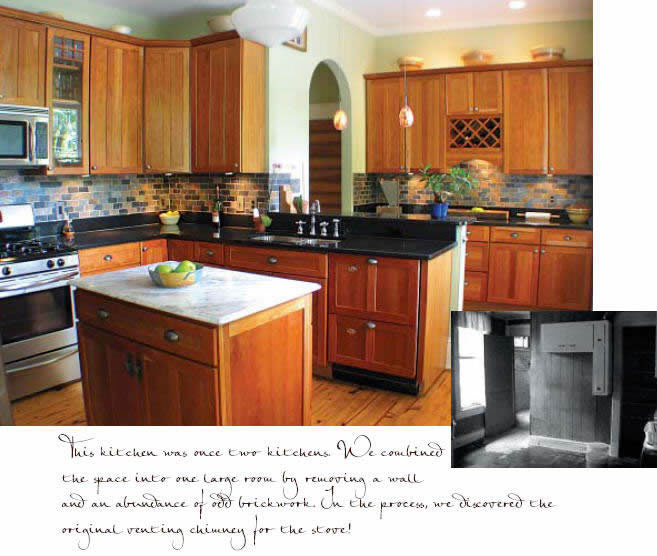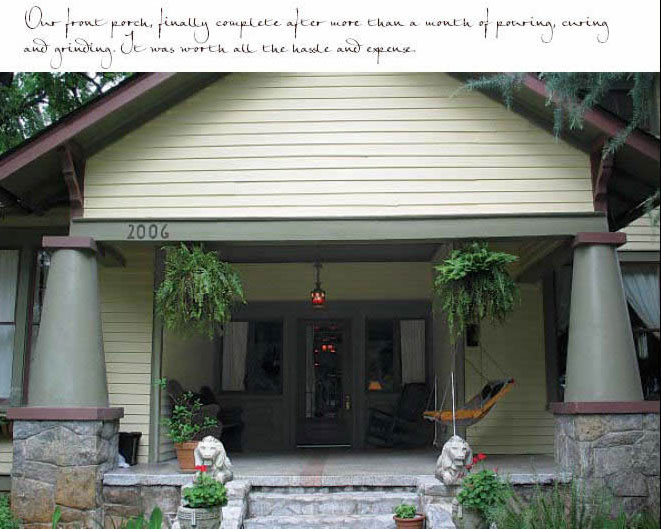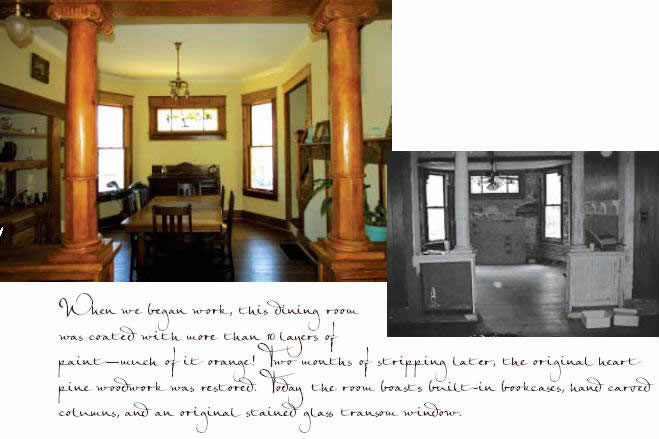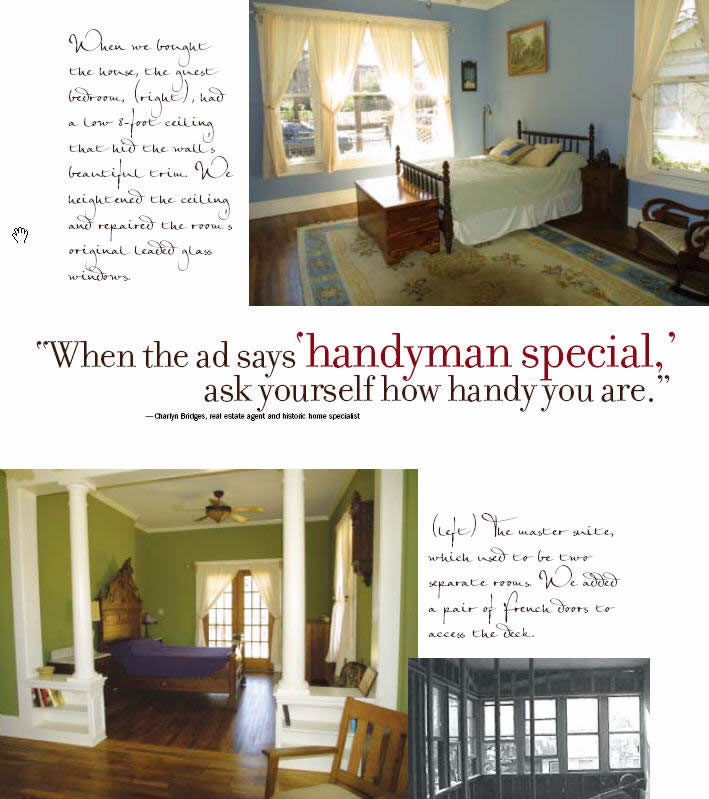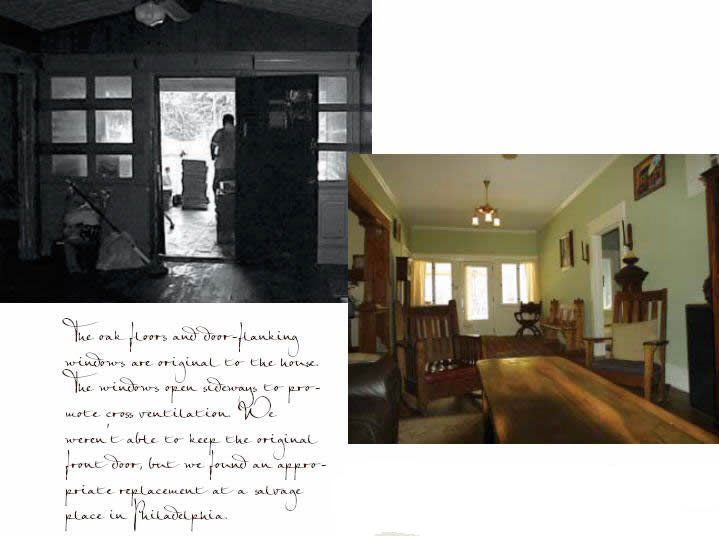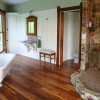
Your Home Magazine – Something Old
Fall 2004
Kara O’Brien’s first rendezvous with her Atlanta, GA. home was love at first sight. The 1912 Craftsman bungalow needed a lot of repair work to be sure, but the architectural details alone would make it worth the effort. From the hand-carved columns to the stained-glass windows to the built-in bookshelves, this was a property loaded with great potential.
But potential wasn’t the only thing it had. The bathroom and the front porch still wore their original marble floor – which took four weeks of non-stop grinding with a $150/day diamond tipped grinder to replaces. The home’s second floor had deteriorated to a poin where ceiling beams and joists had to be rebuilt in order to move the floor back up to its rightful place: above the first.
The honeymoon was over.
Such is the paradox of old-home renovations. Inspiring at best, back-breaking at worst, the adoption and care of an old home is a calling reserved for the special few. Many times, it’s young homeowners wanting to live in a neighborhood as opposed to a subdivision who jump at the chance to restore and older home, says Charlyn Bridges, a real estate agent and historic home specialist in the Canton, Ohio area.
O’Brien falls into that demographic. Growing up in a Virginia Federal-style brick home that once sheltered Stonewall Jackson during the Civil War ingrained in her an appreciation of old homes. At the age of 34, and making a living out of buying, restoring, and selling old homes, she’s become somewhat of an expert on the subject. Her first project was in 1996, and in the years since, she has completed numerous other renovation projects. While almost all old-home stories come with at least one nightmare episode, they just as often come with a gloriously happy ending.
“It’s a great feeling to live in a home we’ve put so much work into,” O’Brien says. “The marble was a mightmare project from start to finish, but I’m so glad we went into it blind. It looks wonderful.”
Pride and satisfaction gained from bringing an old home back to life is one motivating factor. The other factor is the potential financial gain, which can be significant. First, there are the savings. Depending on the age of the home and the state in which it’s located, owners of older homes may get a break on property taxes. Adding to the tax breaks are the low list prices, which usually have a direct correlation to the amount of work required. The lowest purchase price that O’Brien’s company, Kara O’ Brien Renovations, ever paid was $48,000 for a “falling down shack.” Bridges recently showed a home for $20,000.
“The house is structually sound,” Bridges says. “It has great bones; it just needs to be lovingly restored.”
Then comes the potential for profit. Anyone who acquires a fixer-upper at a low cost and takes the time, money and effort to make good improvements can reap a pot of gold when it comes time to resell. O’Brien’s $48,000 shack sold for $428,000 after major restoration and expansion. Bridge’s $20,000 home has yet to be snapped up, but its $70,000 – $90,000 neighborignhomes are strong hints at its potential.
Of course, in renovations, simply subtracting the resale price from the purchase price does not paint the entire profit picture. Between purchase and resale are many dollars, many hours and much effort invested in improving the property. Knowing how to gauge the time and effort required – and then deciding whether your estimated return is worth it – is the defining challenge of old-home buyers.
Inspect, Estimate, Analyze
First, conduct a home inspection. Walk through the house with a certified inspector or general contractor and draw up a “to do list” of every necessary repair or replacement. While most home renovators will proclaim anything and everything fixable, there are certain red flags of which homebuyers should be wary, such as decaying roofs, poor foundations and ancient electrical systems. These may be signs of the need for more extensive work. These projects, sometimes referred to as money pits can drain a new owner’s bank account and make future profits more distant.
“there are two types of issues in home,” Bridges says. “Curable and incurable. Peeling paint is curable; structual damage can be incurable. Structural shifting can be cured, but at what cost?”
When the to do list is complete, get a contractor to assign a cost to each repair. If any estimates or jobs seem questionable, get several estimates. Once the final tally is calculated, plan on exceeding it.
“We have become pretty good at getting close on the estimate repair number,” O’Brien says. “But we still always run over that number, no matter what.”
Next, estimate the home’s resale value. A complex calculation in an of itself, determining a home’s value combines readily available information, such as recent sale prices of other, similar homes in the neighborhood, and not so attainable information, such as the future of the real estate market in your neighborhood and elsewhere.
“Start with a market analysis of similar properties in the same neighborhood,” Bridges says. “Your real estate agent can do that for you. Then comare the improved property value with those around you.”
In the midst of all this estimating and guesswork, the most solid thing a homeowner can grab hold of is a property’s location.
“The only properties on flood plains, on super-busy roads or with similar undesirable physical attributes, ” Kara says.
That’s one category into which O’Brien’s home does not fall. Her front porch offers a view of the eclectic historic neighborhood, and her column-framed master su
ite looks out through plantation shutters to a century-old tree.”This house has so much detail that I notice and appreciate daily,” she says. “Last year, my mom came to visit and brought a cutting from an original Italian grapevine, brought to this country 80 years ago from outside of Naples. We planted the cutting together adn when the vines grew up along my fence, they echoed exactly the stained glass piece in my dining room.”
Hard to put a price on that.
